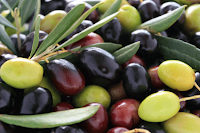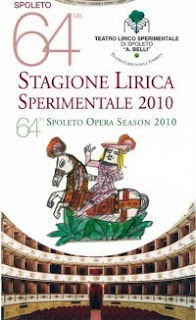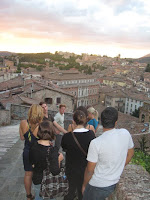 The last week has seen a slow creep towards Autumn in Umbria. Heavier blankets have come down out of the attics, and on the Steps of the cathedral (ever the focal point of Perugia’s social life) t-shirts and shorts have been replaced by long sleeves and jeans. It’s hardly dramatic, as Umbria’s sun never goes behind clouds for too long, even in the depths of winter, and to boot Fall in Umbria means gastronomic treats.
The last week has seen a slow creep towards Autumn in Umbria. Heavier blankets have come down out of the attics, and on the Steps of the cathedral (ever the focal point of Perugia’s social life) t-shirts and shorts have been replaced by long sleeves and jeans. It’s hardly dramatic, as Umbria’s sun never goes behind clouds for too long, even in the depths of winter, and to boot Fall in Umbria means gastronomic treats.
Fairly soon farmers will head out with their green nylon nets to harvest olives: the first press in  Umbria is almost always extra-virgin level, attacks your palate and makes the olive oil of last year seem drab. Then, in early November, central Italians celebrate San Martino, Saint Martin’s feast day: vino novello and roasted chestnuts are the main event. No more ice cream, but there are some consolation prizes. Buon autunno!
Umbria is almost always extra-virgin level, attacks your palate and makes the olive oil of last year seem drab. Then, in early November, central Italians celebrate San Martino, Saint Martin’s feast day: vino novello and roasted chestnuts are the main event. No more ice cream, but there are some consolation prizes. Buon autunno!





 Last Thursday, Umbra students attended a wine tasting at a local enoteca in Perugia. The art of wine production came alive as the expert explained how to pair foods with the wine’s acidity, how to read the labels, and how to use one’s sense of smell, taste, and sight to examine its quality and age. Students sampled three types of wine to judge for themselves whether they found hints of green apple and almond here or honey and blackberry there.
Last Thursday, Umbra students attended a wine tasting at a local enoteca in Perugia. The art of wine production came alive as the expert explained how to pair foods with the wine’s acidity, how to read the labels, and how to use one’s sense of smell, taste, and sight to examine its quality and age. Students sampled three types of wine to judge for themselves whether they found hints of green apple and almond here or honey and blackberry there.
 Side-by-side, Arcadia students and volunteers of the Orsini family’s eco-friendly farm became a pasta making factory. The tradition of pasta making came alive as students kneaded, rolled, and cut the dough made of eggs and flour. However, the day was much more than feasting on tasty, farm fresh Italian cuisine; students toured the self-sustaining farm where facilities were constructed of materials from the earth- hay and dirt. Recycled plastic and glass bottles in the walls cleverly transformed the sunlight into a stream of color. Arches of growing vines formed a picturesque terrace.
Side-by-side, Arcadia students and volunteers of the Orsini family’s eco-friendly farm became a pasta making factory. The tradition of pasta making came alive as students kneaded, rolled, and cut the dough made of eggs and flour. However, the day was much more than feasting on tasty, farm fresh Italian cuisine; students toured the self-sustaining farm where facilities were constructed of materials from the earth- hay and dirt. Recycled plastic and glass bottles in the walls cleverly transformed the sunlight into a stream of color. Arches of growing vines formed a picturesque terrace.

